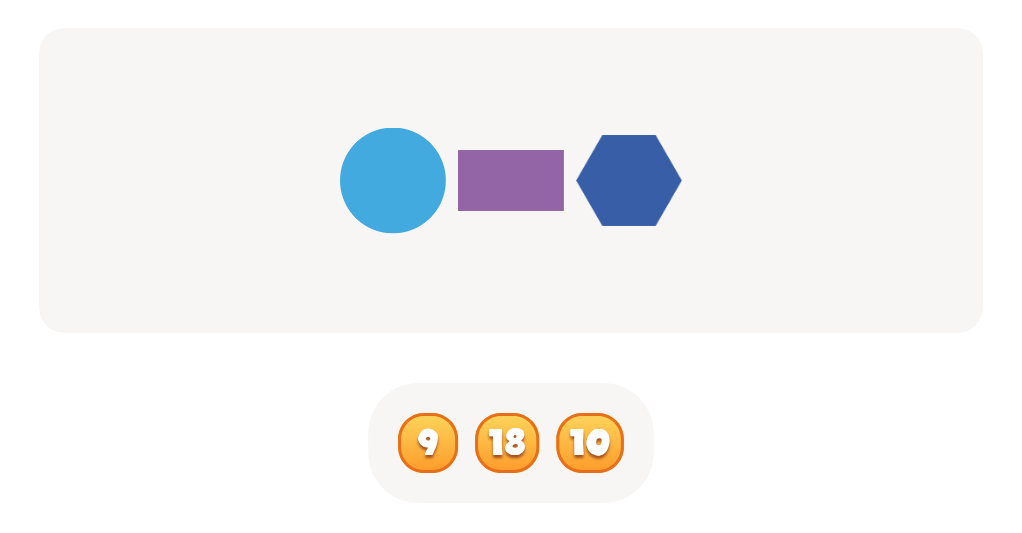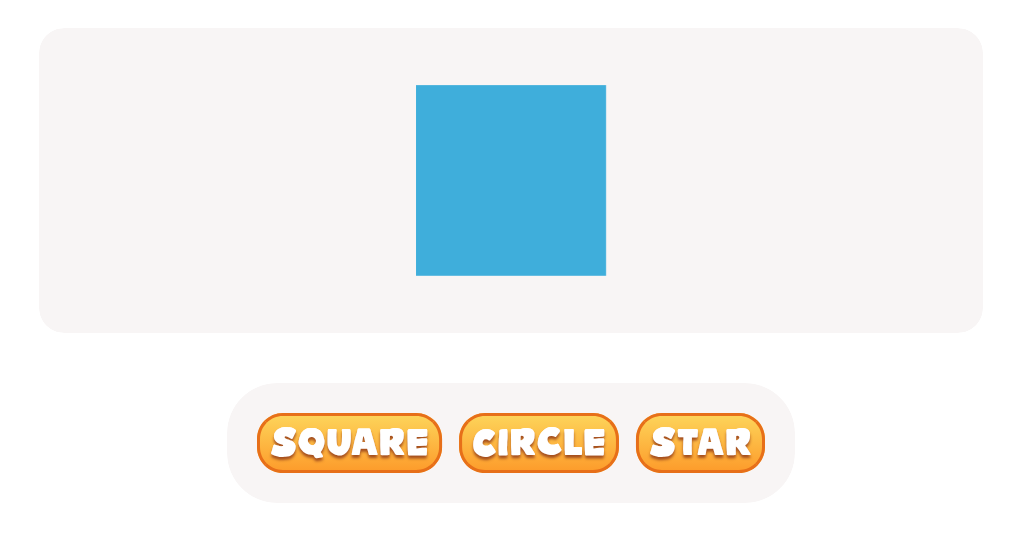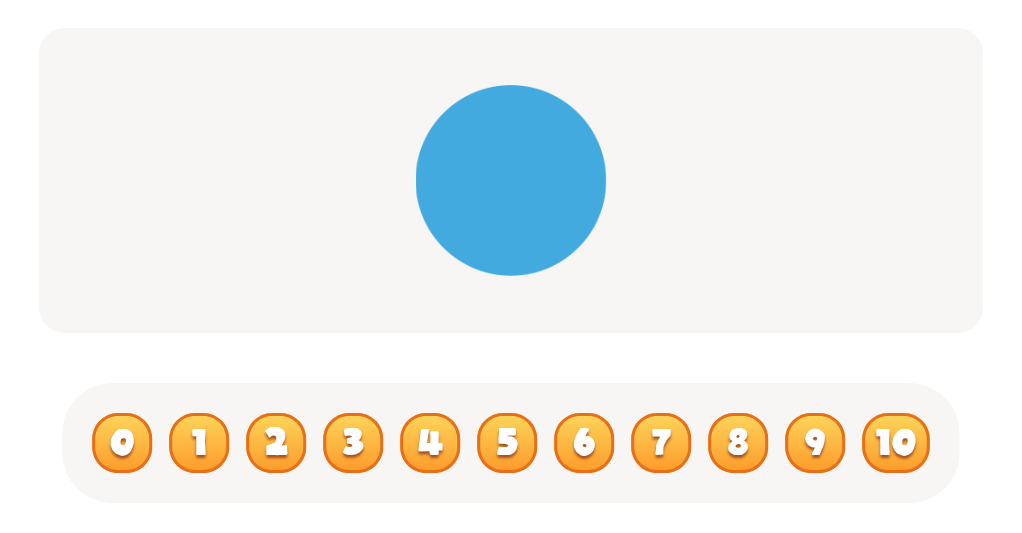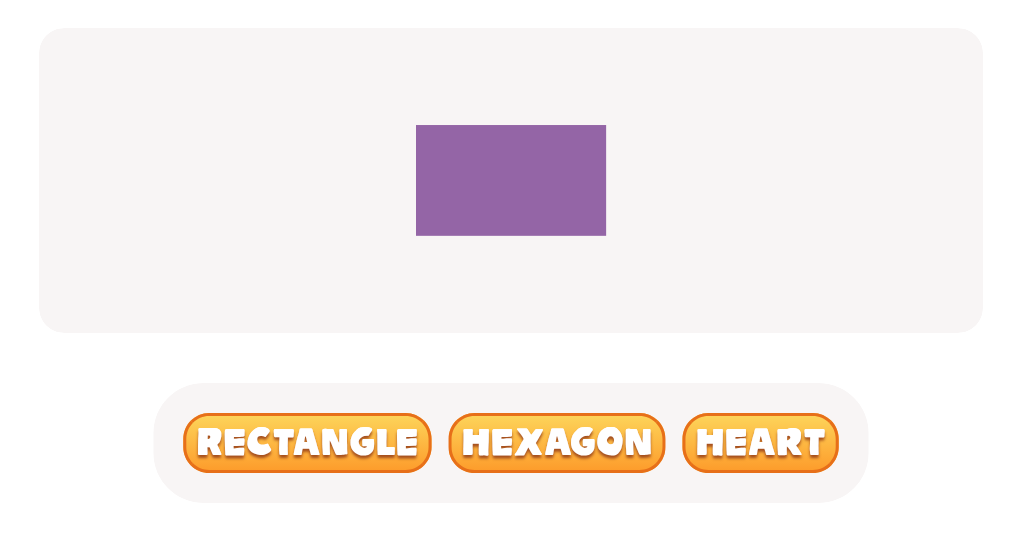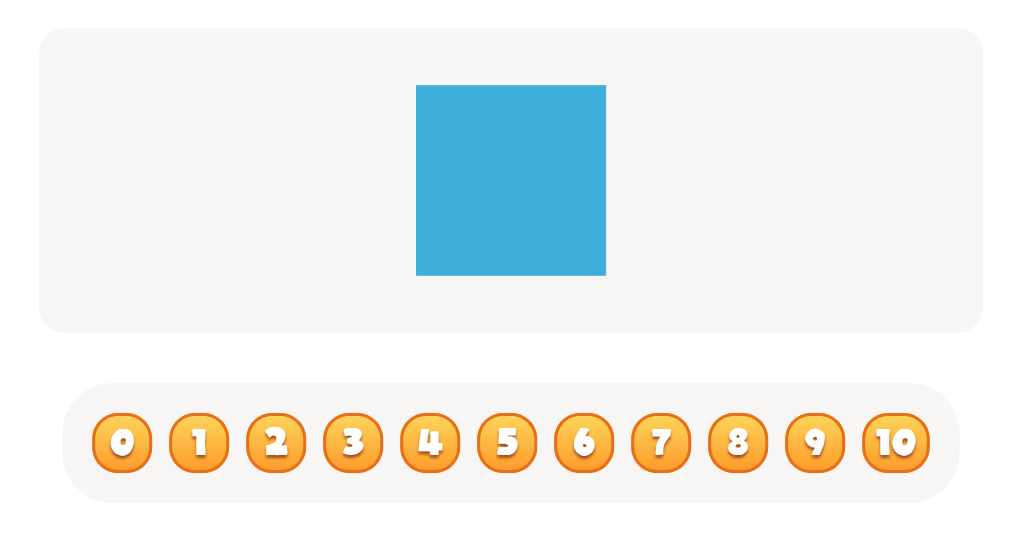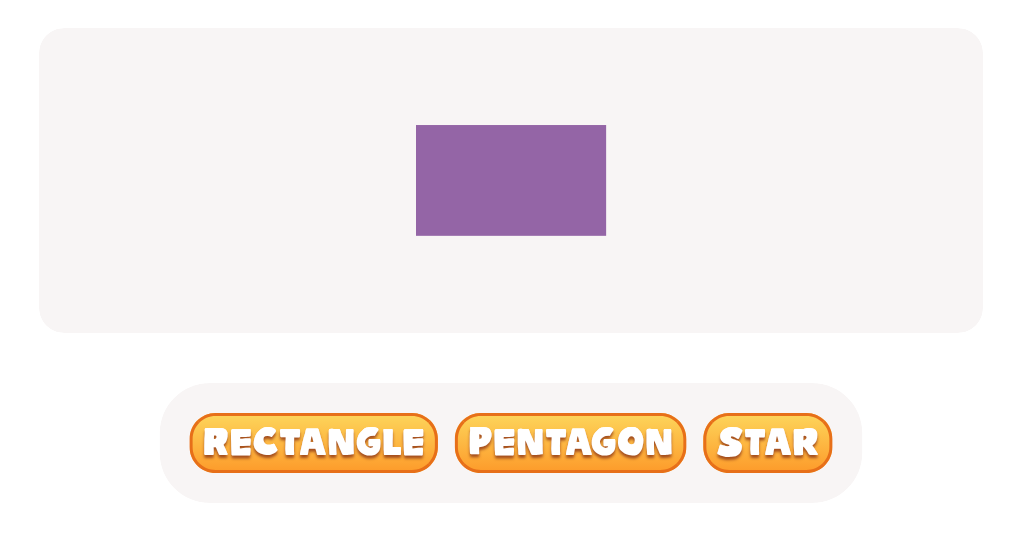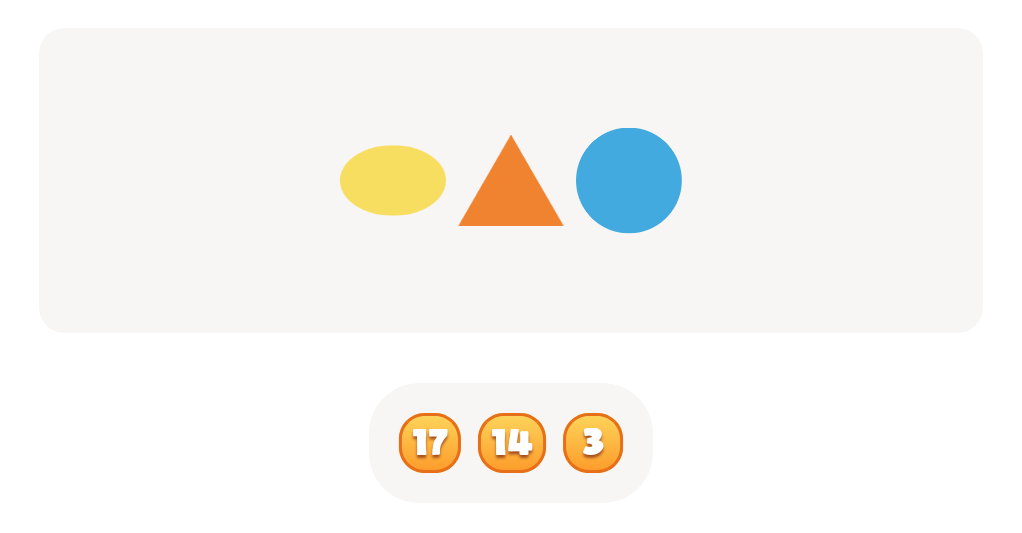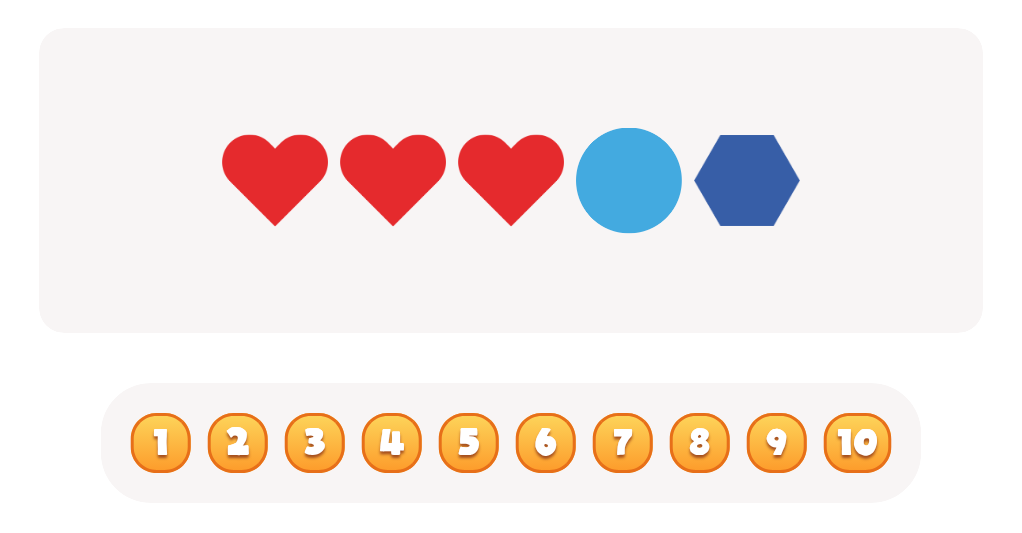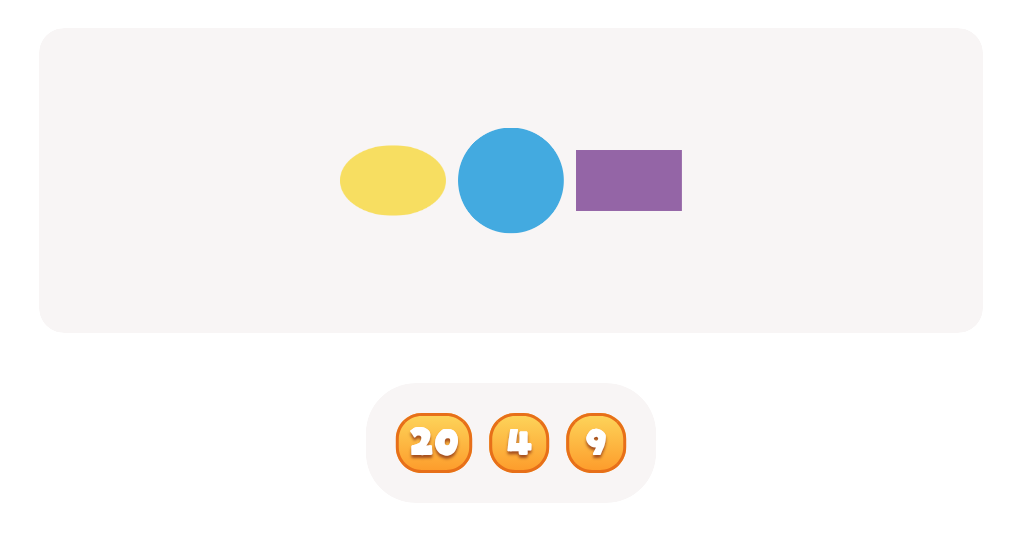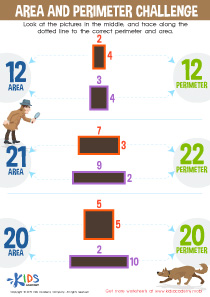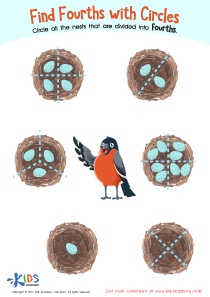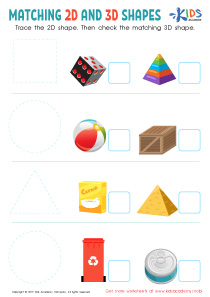Extra Challenge 2D Shapes Worksheets for Ages 3-4
6 filtered results
-
From - To
Introducing our Extra Challenge 2D Shapes worksheets, meticulously crafted for curious minds aged 3-4. Perfect for young learners, this collection is designed to engage, challenge, and enhance understanding of basic 2D shapes in a fun and interactive way. Tailored specifically for those eager for an extra challenge, these worksheets blend colorful illustrations with educational content, ensuring a delightful learning experience. From circles and squares to triangles and rectangles, our worksheets help develop critical thinking and fine motor skills. Dive into our Extra Challenge 2D Shapes for Ages 3-4 collection and watch your child's fascination with shapes grow!
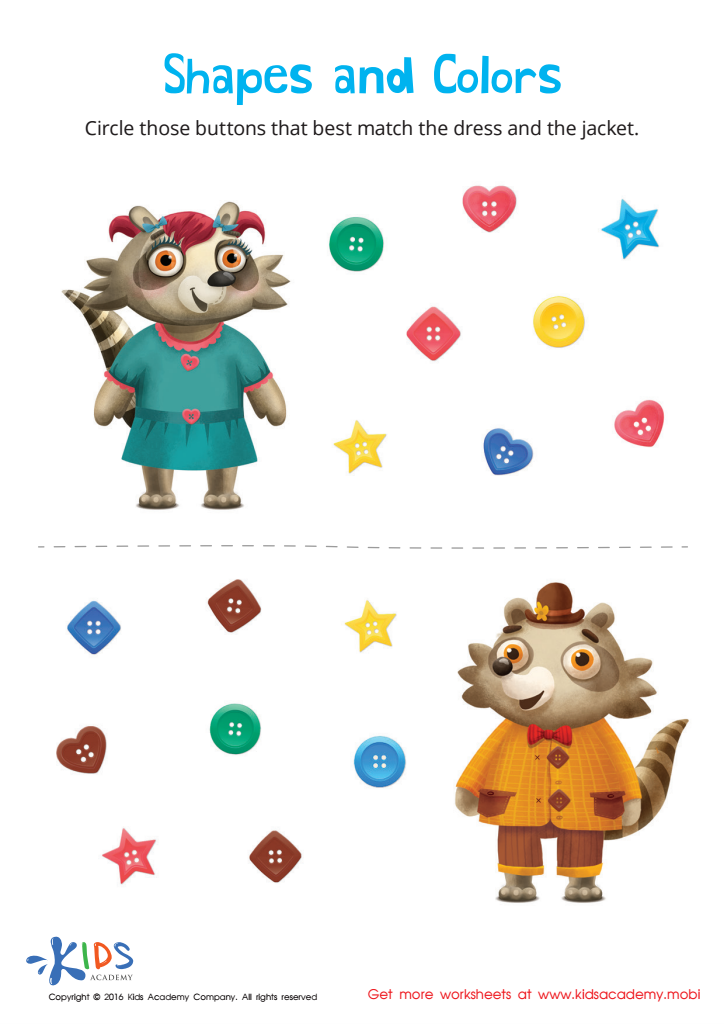

Matching: Shapes and Colors Worksheet
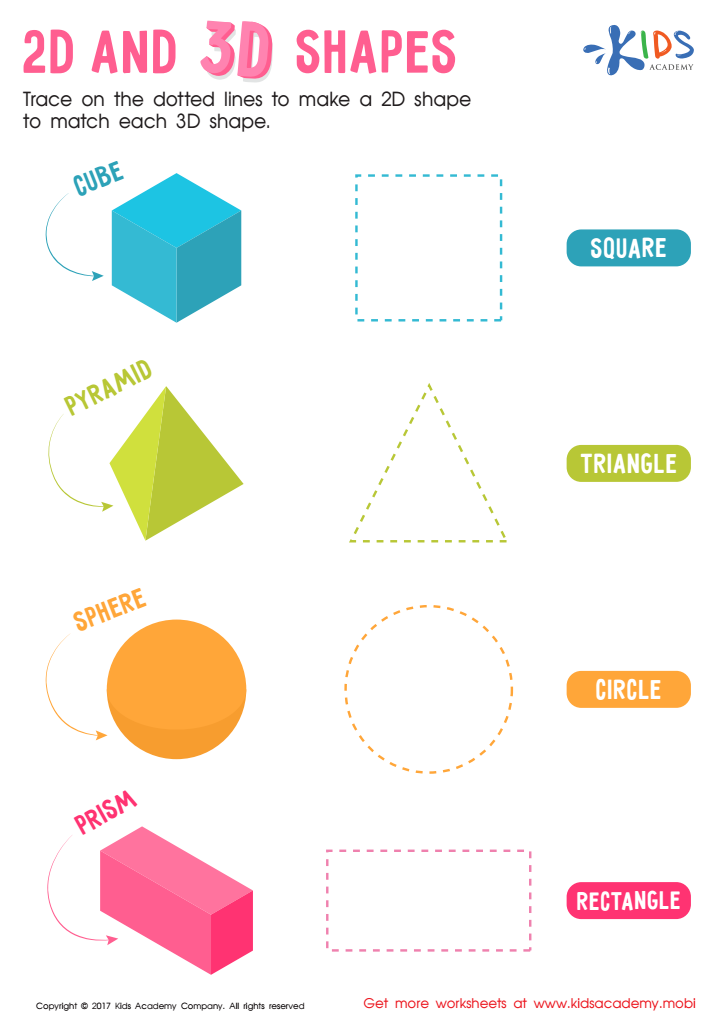

2D and 3D Shapes Worksheet
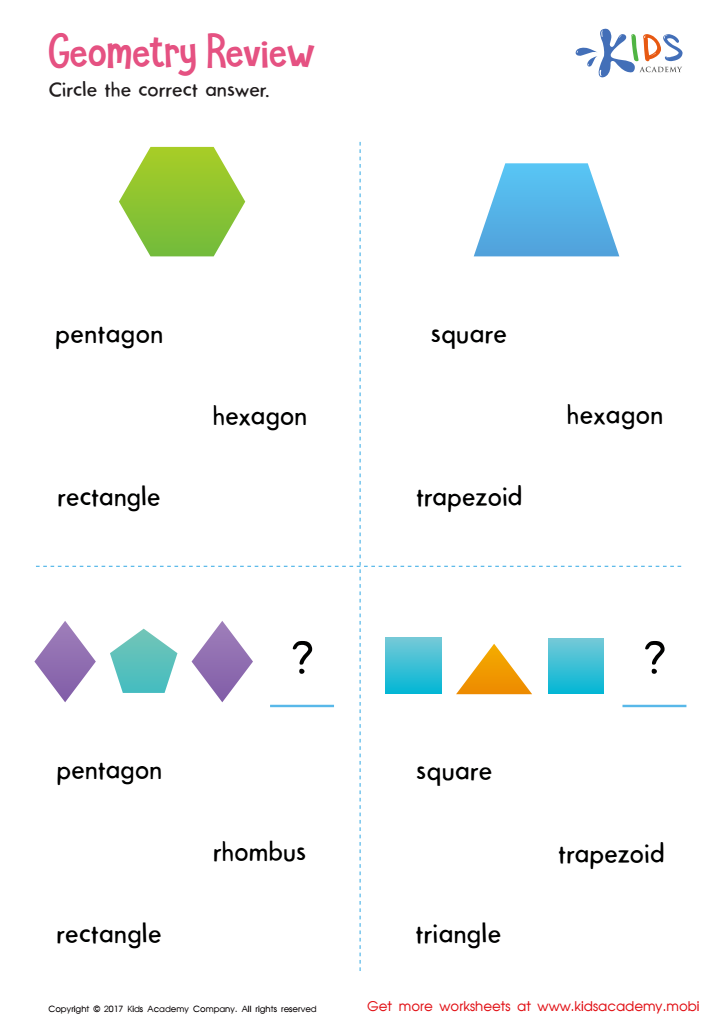

Geometry Review Printable


Trace and Draw More Shapes Worksheet
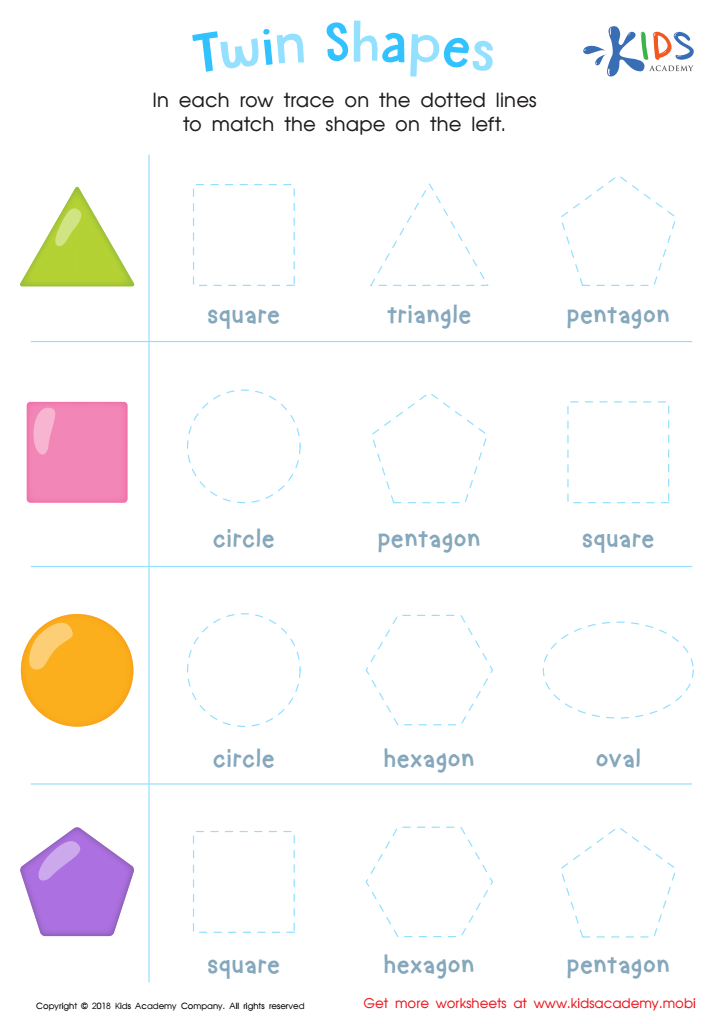

Twin Shapes Dot-to-Dot Worksheet


Shapes Worksheet
Extra Challenge 2D Shapes worksheets for Ages 3-4 are an exceptional resource for young learners venturing into the world of geometry. At this critical stage of development, children are naturally curious and eager to explore the environment around them. These worksheets are meticulously designed to harness this curiosity, turning it into a learning opportunity that is both engaging and educational.
The beauty of the Extra Challenge 2D Shapes worksheets lies in their ability to introduce complex concepts in a manner that is accessible for 3 to 4-year-olds. Through a series of interactive activities, children are guided to recognize, name, and even draw basic 2D shapes such as circles, squares, and triangles. This not only enhances their visual-spatial understanding but also lays a solid foundation for mathematical skills that they will continue to build upon in future grades.
Moreover, these worksheets are crafted to provide an extra challenge, pushing young learners slightly beyond their comfort zones. This encourages problem-solving skills, critical thinking, and perseverance from an early age. As children successfully navigate these challenges, their confidence and love for learning grow exponentially.
In conclusion, the Extra Challenge 2D Shapes worksheets for Ages 3-4 are not just another educational tool; they are a stepping stone towards nurturing young minds to think geometrically and develop a strong framework for their academic journey ahead.
 Assign to My Students
Assign to My Students
